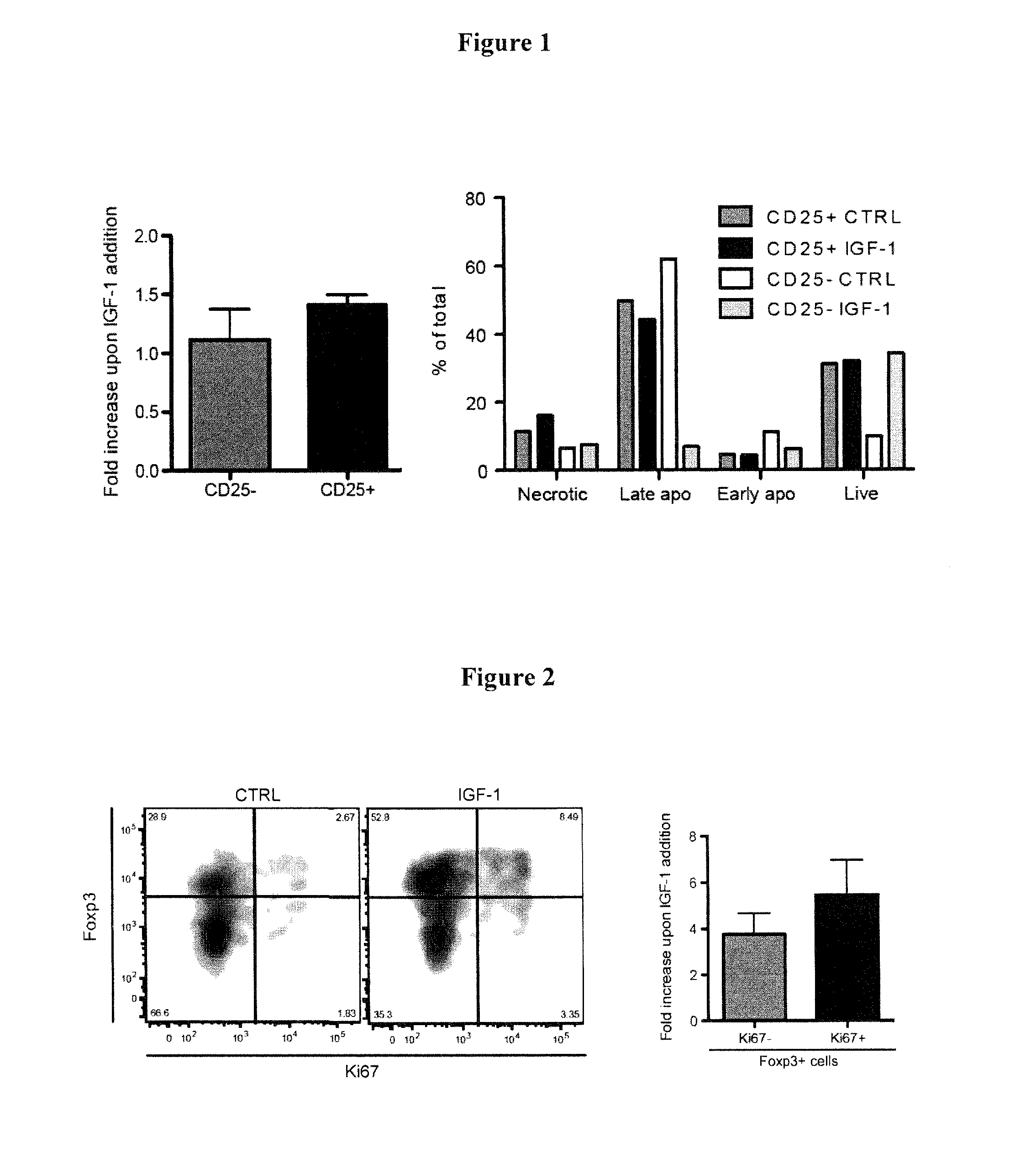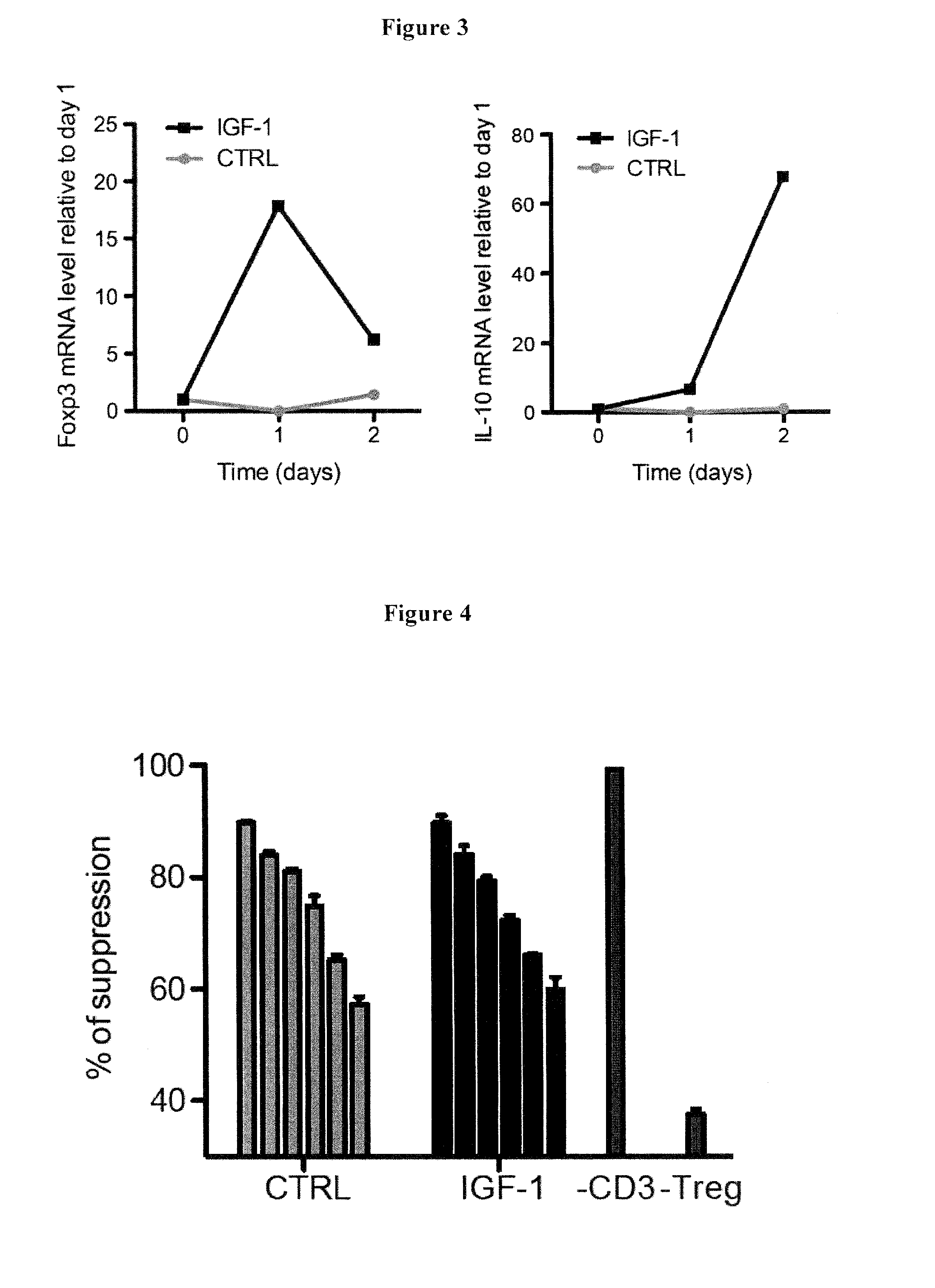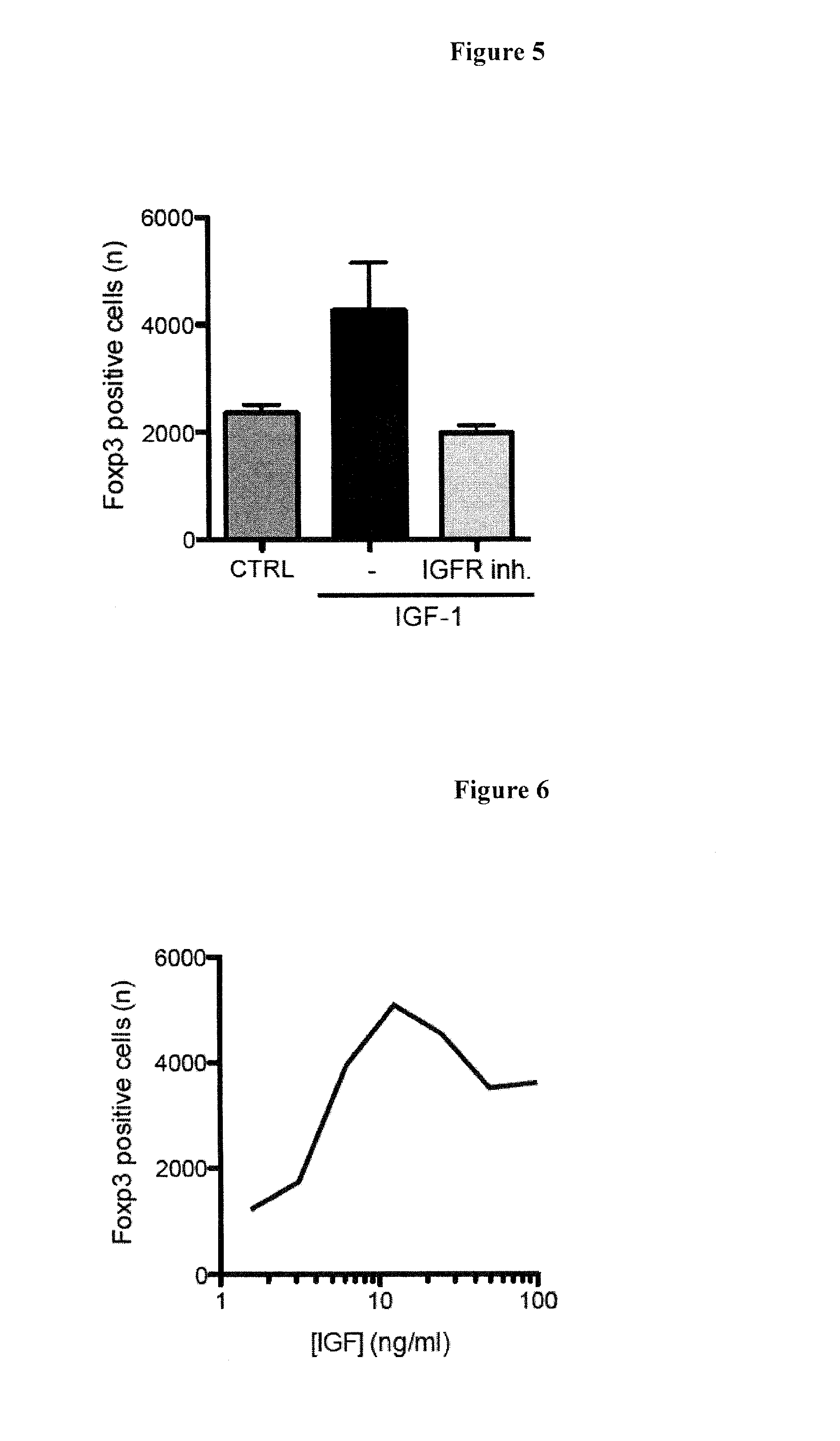Use of igf-1 in the modulation of treg cell activity and the treatment and prevention of autoimmune disorders or diseases
a technology of treg cell activity and igf-1, which is applied in the direction of peptide/protein ingredients, dna/rna fragmentation, peptide sources, etc., can solve the problems of difficult cure, difficult to prevent, and extensive tissue damage of autoimmune diseases, so as to prolong the survival of grafts, increase the number and suppressive activity, and provoke tumor immunity
- Summary
- Abstract
- Description
- Claims
- Application Information
AI Technical Summary
Benefits of technology
Problems solved by technology
Method used
Image
Examples
example 1
Methodology for the In Vitro Expansion of CD4+CD25+FoxP3+ Treg Cells: Ex Vivo Cellular Therapy of T-Cell-Mediated Diseases
[0182]It has been suggested previously that the IGF-1 / IGF-1R signaling pathway could play a role in regulating immune function (Buul-Offers and Kooijman, 1998; Dorshkind and Horseman, 2000; Smith, 2010). In the immune system IGF-1 has been shown to be regulated by other pro-inflammatory cytokines, like IL-1 and IFN-gamma, indicating a putative cytokine-like function of IGF-1 (Buul-Offers and Kooijman, 1998). Although initially believed to act as anabolic and stress-modulating hormone (Dorshkind and Horseman, 2000), cumulative evidence points to more important role of this pathway in regulating the quality and the amplitude of the immune response (Smith, 2010). Nevertheless, and surprisingly, the precise role of IGF-1 in immunity has remained relatively unexplored. Here the inventors show a method for stimulating regulatory T cells in vitro. This method is based o...
example 2
Systemic Delivery of IGF-1 Suppresses Autoimmune Diabetes and Restores Immune Tolerance
[0192]Here the inventors describe a method to deliver IGF-1 in a systemic manner that results in the protection from experimentally induced diabetes. The inventors show that IGF-1 treatment results in long-term improved glucose homeostasis, a consequence of beta-cell protection and insulin production. This effect is concomitant to an increase of regulatory T cell number in the pancreatic tissue. Hence, this is the first demonstration in vivo that using a clinically relevant model (i.e., systemic delivery of IGF-1) results in long-lasting restored immune tolerance, thus providing a novel approach to immunotherapy for autoimmune diseases.
[0193]Type-1 diabetes (T1D) is an autoimmune disease caused by the T cell induced destruction of the insulin-producing β-cells of the pancreas (Atkinson, 1999). The onset of this disease is preceded by a progressive leukocyte infiltration (insulitis), which eventual...
example 3
Protective Effects of IGF-1 on Diabetes are a Result of its Immunomodulatory Action
[0197]Previous work has reported that IGF-1 delivery could prevent T1D development in different mouse models (e.g., adoptive transfer of autoreactive T cells from NOD mice and STZ treatment; Bergerot et al., 1995; George et al., 2002). Using a transgenic model overexpressing IGF-1 in β-cells it was shown that IGF-1 could prevent β-cell destruction and leukocyte infiltration during the progression of the disease (George et al., 2002; Casellas et al., 2006) and also helped in regeneration of the endocrine pancreas (Agudo et al., 2008). It was suggested then that local expression of IGF-1 in β-cells regenerates pancreatic islets and thus counteracts T1D. Indeed, IGF-1 has a wide range of biological actions and stimulates cell proliferation and differentiation in many different tissues (LeRoith, 1997), including the pancreas (Smith et al., 1991). IGF-1 induced β-cell proliferation was shown to be facilita...
PUM
| Property | Measurement | Unit |
|---|---|---|
| pH | aaaaa | aaaaa |
| pH | aaaaa | aaaaa |
| pH | aaaaa | aaaaa |
Abstract
Description
Claims
Application Information
 Login to View More
Login to View More - R&D
- Intellectual Property
- Life Sciences
- Materials
- Tech Scout
- Unparalleled Data Quality
- Higher Quality Content
- 60% Fewer Hallucinations
Browse by: Latest US Patents, China's latest patents, Technical Efficacy Thesaurus, Application Domain, Technology Topic, Popular Technical Reports.
© 2025 PatSnap. All rights reserved.Legal|Privacy policy|Modern Slavery Act Transparency Statement|Sitemap|About US| Contact US: help@patsnap.com



